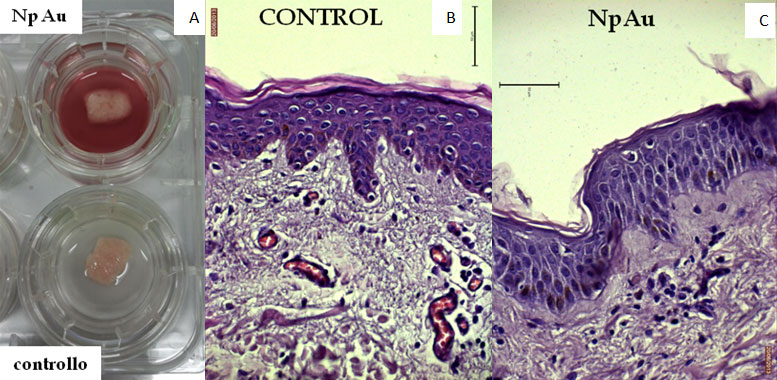Fast propagation of nanotechnologies into different industries and consumer products is causing exponential growth of nano-materials production. Hence, increasing amounts of nanoparticles reach occupational settings and the indoor and outdoor environments, thus representing a potentially serious hazard to people’s health. The mechanism by which nanoparticles interact with biological systems are relatively unknown and the toxicological, eco-toxicological and exposure data needed to perform a complete risk analysis are lacking. Nanoparticles can gain access to the blood stream via inhalation or ingestion. At least some nanoparticles can penetrate the skin; even larger microparticles may penetrate skin when it is flexed.
In LABION, to bridge a gap on this lacking mechanism study, we decided to investigate the nanoparticles toxicity on human tissue to determine, in organotypic cultures of ex vivo human skin samples, if exposure to some nanoparticles (TiO2 and graphene) may provoke a skin homeostasis alteration and irritation. In particular we are evaluating the protein expression of proliferation and acute inflammatory biomarkers by immunofluorescence analysis.
This project is granted by Fondazione Cariplo (Bando: Particolato ultrafine e nanoparticelle ingegnerizzate). and we are working in close collaboration with University of Milan (UNIMI), University of Milano Bicocca (UNIMIB), University of Pavia (UNIPV) and University of Insubria (UNINSUBRIA).
In order to maximize the reproducibility of the experimental set up we first focused our attention on the skin culture protocol and on the nanoparticles solubility in the culture medium. Our results highlighted a good optimization of the human skin culture protocol and a good biocompatibility the gold nanoparticles (NpAu made in our lab) with a well preserved human skin compared to control sample (as observed in the histological photomicrographs here below).

A: Organotypic human skin colture with and without Nps
B and C: Haematoxylin and Eosin staining of control and NpAu treated skin sample . Original magnification: 40x




